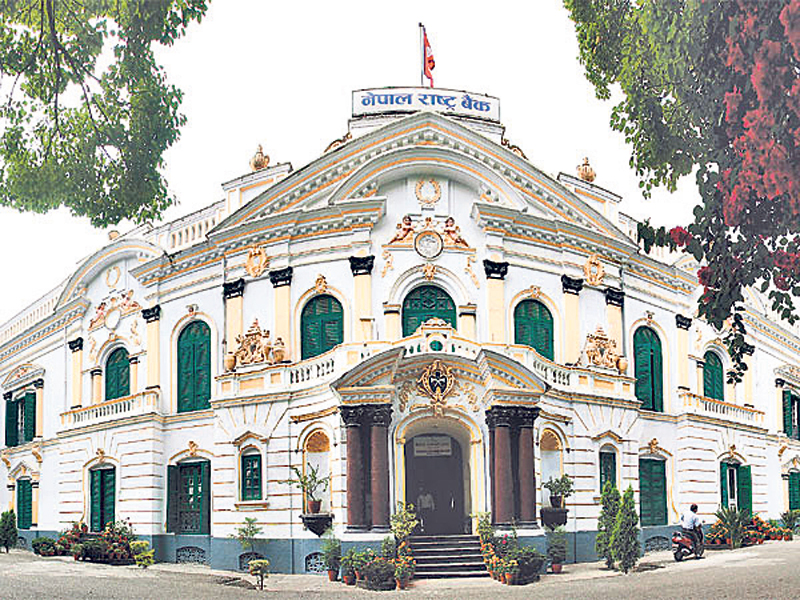KATHMANDU, July 12: Governor of the Nepal Rastra Bank (NRB) Biswo Nath Poudel made major changes to the Monetary Policy for Fiscal Year 2025/26 which experts have welcomed as ‘unexpectedly pragmatic’ in revitalizing the national economy.
Presenting his first monetary policy since taking office, Governor Poudel said the central bank has taken a “cautiously accommodative” stance to ease financial conditions without compromising economic stability.
Governor Paudel announced that the new policy will have positive effects on the share market, real estate and banking sector.
Experts have hailed the policy as a liberal monetary policy that promotes a free economy and breaks away from the traditional monetary policies of the past.
Former NRB governor Dipendra Bahadur Chhetri told Republica that liberal nature of the monetary policy rivals that of the liberal policy implemented during the COVID pandemic.
“This monetary policy breaks away from the traditionally conservative monetary policy,” he said, “The liberal nature of the policy rivals the liberal policy implemented during COVID pandemic, promoting a free economy by including provisions conducive to people and institutions that have financial resources.”
Monetary policy to be unveiled next week: NRB Governor Adhikari

He added that while Governor Poudel was expected to unveil a liberal policy, the degree of economic liberalization envisioned by the policy beats the expectations of economic experts.
Economist Ram Prasad Gyawali hailed the policy as a pragmatic policy that promotes economic growth by simulating economic activity. “All the changes to economic variables seem to point towards a positive change in the economic sector,” Gyawali told Republica.
As a major highlight of the policy, the bank rate, which serves as the upper limit of the interest rate corridor, has been set at six percent, and the policy rate at four and a half percent. Previously, the bank rate was 6.5 percent and the policy rate was 5 percent.
When a central bank lowers the interest rate corridor, it narrows or shifts the range between the policy rates it uses to manage short-term liquidity in the banking system. This typically includes the standing deposit facility at the lower end and the standing lending facility at the upper end.
Former Governor Chhetri said that lowering the interest rate corridor will encourage bank lending which boosts credit flow and stimulates economic activity, reduces interest rates in the market which can result in cheaper loans for consumers and businesses, improves liquidity conditions and signals a policy direction which strongly supports economic growth.
“The lower interest rate corridor is a positive change which eases liquidity stress and signals that the central bank is committed to supporting economic growth,” he said.
However, economist Gyawali cautioned that the lowered interest rate could also exert inflationary pressure on the economy and depreciate the currency. “Increased circulation of money can raise prices if the money supply cannot keep pace,” he said, “Lower interest rate might affect forex reserves and exchange rates, exerting depreciation pressure on currency.” He added that such a policy also signals dovish stance which could be interpreted as the central bank prioritizing economic growth over inflation control.
Among the major changes in lending, the central bank has removed loan limits for institutions, increased the loan limit for individuals against share collateral from Rs 150 million to Rs 250 million, introduced a policy allowing banks and financial institutions to provide up to 80 percent financing for first-time home construction, and envisioned the implementation of a credit score-based lending system.
Former Governor Chhetri welcomed this provision in the policy, expecting it to revitalize the real estate sector, especially invigorating the job market and construction sector. Economist Gyawali claimed that the ambiguity in identifying ‘first-time’ home owners might lead to loan defaults in the long run.
“These measures could help in reviving credit flow and stimulating economic activity,” Chhetri said, “The first-time home construction provision is expected to boost the housing sector by facilitating easy access to loans.”
Although the concept of credit scores has been discussed for the past few years, the 24th monetary policy formally mentions that BFIs will begin adopting a lending policy that considers customers' credit scores.
According to the NRB, individual borrowers who have been repaying their loans on time will be eligible for new loans based on their consistent repayment history.
Economist Gyawali said that the introduction of credit score-based lending will help in risk management in lending by BFIs. “It does not make sense for individuals with different loan repayment histories to be provided the same interest rate on new loans,” he said, “The credit score system will help the BFIs avoid risk by categorizing the loans as per the risk.”
The central bank has also outlined measures in the newly released monetary policy to help the country exit the Financial Action Task Force’s (FATF) grey list. Similarly, the NRB is set to establish an asset management company to manage non-banking assets of banks and financial institutions.




































